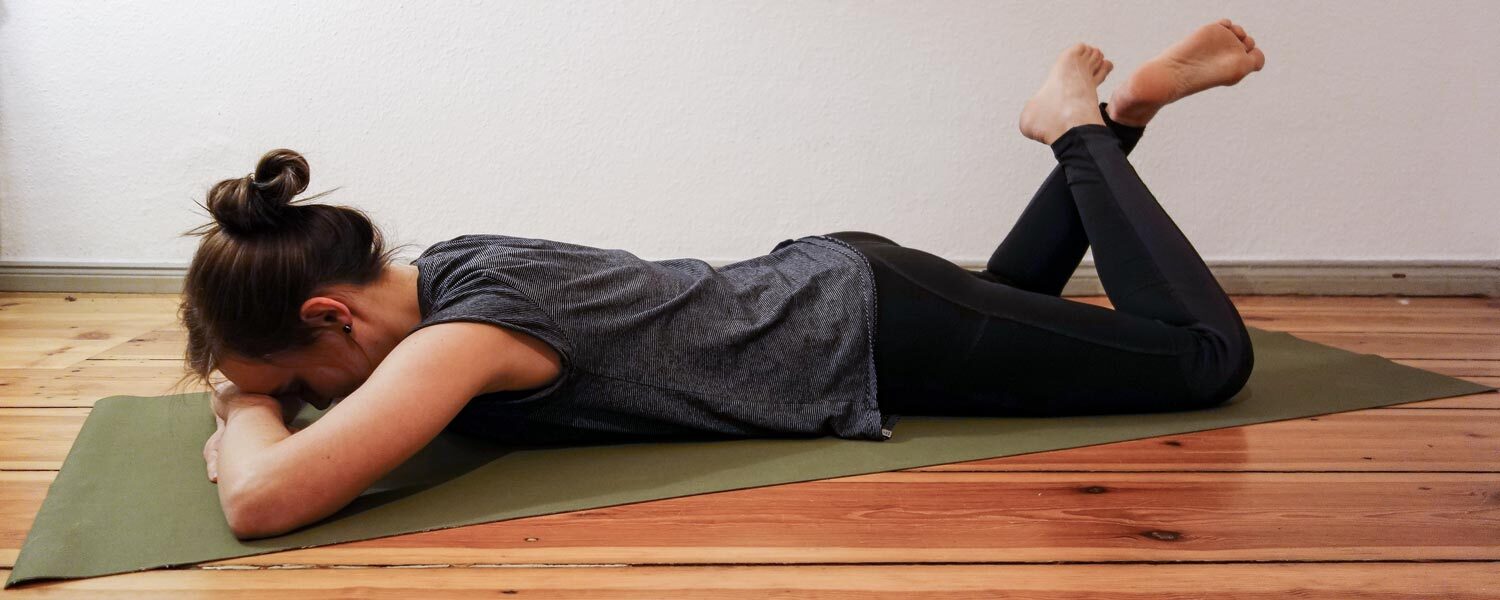by Sophie Stahl (07.01.2022)
The first part was about understanding breathing, the second part is about experiencing it! Physiotherapist and oboist Sophie Stahl shows you three practical exercises to relax, train or regenerate your respiratory muscles. They are ideal for everyday musical life - before, during or after a rehearsal.

Have you understood the Processes of Breathing in Part 1? Then let's experience it! All you need is: you, a chair and a mat (or alternatively a blanket, a towel...).
Just one thing first: I have chosen these theoretical contents and exercises to give you a first insight into understanding and experiencing breathing. If one of these exercises does not feel right for you, please do not force it. Not every exercise works for everyone. Please respect your pain and seek medical and physiotherapeutic support if you experience physical discomfort.
But now go straight ahead! Experience your breathing in a new way!
– Great for in-between! –
Air enters your lungs through the activity of your respiratory muscles and the negative pressure created when you inhale. The main actor in this process is your diaphragm. When the diaphragm is activated during inhalation, it descends, pulling your lungs down with it. This creates a negative pressure and air flows through your airways into your lungs.
This activity can be traced through the exercise 'diaphragm relaxation to go'. I like to call it that because it is great to do in between rehearsals, for example. By the way, this exercise relaxes your diaphragm.

Aim: By closing your nose when you try to inhale, your breathing muscles, especially the diaphragm, work with maximum tension, but without being able to move. This activates a reflex that subsequently triggers relaxation. Only when a muscle has relaxed after an activity can it muster new strength again - a great mechanism of our body that you can make use of and perhaps know from PMR (Progressive Muscle Relaxation according to Jacobsen).
This exercise also allows you to feel where the muscles are that allow you to breathe. Try it again and listen to yourself!
Repetitions: two or three times, then take a relaxed breath again.
Suitable for: once a day to feel your breathing activity and relax your diaphragm.
Approach this exercise carefully as it is very demanding on your respiratory muscles.
– Oriented on the exercise "The floor gives strength back" from the Tanzberger concept –

Aim: This exercise allows you to feel the synergy between the diaphragm and the pelvic floor. In the third step you will learn to allow, actively use and train the support of your muscles (including the pelvic floor) during breathing out.
Repetition: Three to five times, then relax and watch. Don't forget to relax your pelvic floor while you breathe in.
Ideal for: Breath warm-up before practising or as an active break in between.
– Based on the Warm Belly exercise from the Tanzberg Concept –
To relax all your lower abdominal and pelvic floor muscles, let me introduce you to one of my favourite exercises. It's perfect for unwinding after a long rehearsal.

Aim: The swinging movement over a period of two to three minutes leads to greater blood circulation in the entire abdominal, pelvic and hip region. Your body is supplied with fresh nutrients and O₂ and all metabolic waste products are removed. In this way, you promote the regeneration of your muscles and prepare your body optimally for the next exercise session.
Repetitions: two to three minutes.
Suitable as: a daily cool-down after training. Believe me, it's worth sticking with it!
I wish you much joy in understanding and experiencing your breathing!

There is a separate Stretta website for the country Worldwide. If your order is to be delivered to this country, you can switch, so that delivery times and shipping conditions are displayed correctly. Your shopping cart and your customer account will remain the same.
Sophie Stahl works as a freelance oboist (M. Mus.) and physiotherapist in the Berlin and Brandenburg area.
She began her studies in the Netherlands with Prof. Marc Schaeferdiek and completed her Masters at the UdK in Berlin with Prof. Washington Barella. Since then she has played regularly as a substitute in various orchestras. She is also active in various chamber music ensembles.
After graduating, she trained as a physiotherapist at MHB Neuruppin. She complemented this with numerous further training courses (including manual therapy, Crafta courses, therapeutic climbing).
Sophie Stahl has been working in the field of musicians' health since 2020. In this context she regularly offers workshops, seminars and 1:1 coaching for musicians on the topics of "Breathing", "Pelvic floor - strong support", "Posture" and "Embouchure", which are mostly specific to wind players. Her aim is to prevent injury, overuse and misuse through a better understanding and experience of the body's own processes.
The main focus of the physiotherapy practice (in cooperation with the Centre for Musicians' Medicine at the Charité in Berlin) is the treatment of musicians as well as orthopaedic, neurological and craniomandibular (jaw, head) conditions.